When in your Trip to china go visit the Beijing Imperial Palace, better known as the Forbidden City, you will see that it is located north of the great Tiananmen Square.
After your long walk through this great square in Beijing and you want visit the Forbidden City, you will find a large building that has the name of the Tiananmen gate.
Through it you will access the interior of the enormous enclosure of the old Imperial Palace, which contains many places of interest, the most notable of which I will indicate to you for a visit on your own.
TOUR OF THE FORBIDDEN CITY
To visit this impressive monument you also have the option of signing up for a Tour of the Forbidden City with the company of a guide in Spanish.
It is an 8-hour excursion that will begin with a visit to Tiananmen Square and conclude with a tour of the traditional hutong neighborhoods.
All the information in detail
1 Tiananmen Gate

This beautiful and impressive building with the characteristic Chinese architectural style was built in the year 1420.
It was mainly used for the great proclamation ceremonies of the new emperor, which was communicated to the Chinese people from its upper tribune.
Until 1911, no one could go through the access door to the Imperial Palace, except the emperor's family and the aristocrats; that's where the name comes from Forbidden City.
access to the Tiananmen gate From the large square of the same name it is done across five bridges of great beauty that cross the moat that surrounds the Imperial Palace.
La Tiananmen gate It also has great symbolic meaning for today's China, since from the upper tribune that is located above the arch of the door The People's Republic was proclaimed in 1949 by Mao Zedong.
Currently, on the Tiananmen gate arch There is a large portrait of said great leader Mao Zedong.
2 Halls of Harmony in the Forbidden City
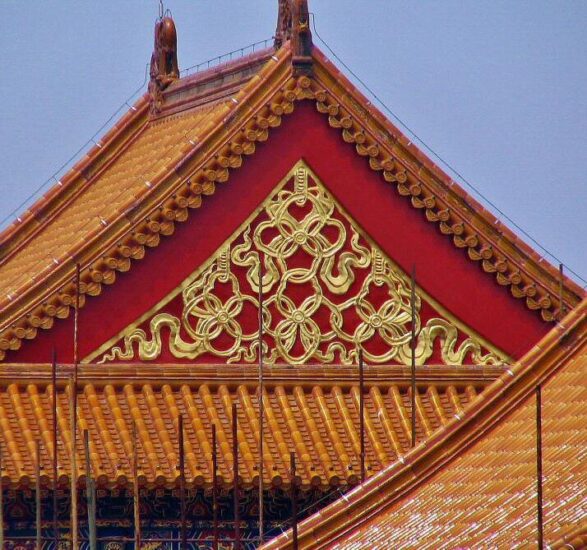
After accessing the Tiananmen gate, the most common is tour the Imperial Palace in the south-north direction, passing through new doors and visiting the rooms that we find as we progress.
They are actually small palaces with large rooms where in its heyday certain activities were carried out.
En times of heavy tourismAs it may be the month of August, taking this tour may mean going along with a veritable human wave of tourists, the absolute majority of Chinese origin.
The first door we will cross will be Gate of Supreme Harmony, after which we will find ourselves in an impressive patio in front of us.
And before us appears the first of the three Halls of Harmony, the so-called Hall of Supreme Harmony.
It is in this large courtyard of 30.000 square meters where the emperor held the great public ceremonies, standing at the door of the aforementioned Hall of Supreme Harmony.
The image of this Hall (or small palace) and A sample of this type of ceremonies is presented to us in the movie The last Emperor, which was filmed in the Forbidden City.
When a new emperor came to the throne, on his birthday or his wedding, I went on the winter solstice or the Chinese New Year, were some of the moments when these celebrations were held.
Built in the year 1406, the Hall of Supreme Harmony It is located on a three-level white marble terrace, with the balustrades decorated with numerous reliefs.
It was the symbol of imperial power, and during the time of the dynasties Ming y qin The construction of a larger building was not permitted.
Following the Hall of Supreme Harmony, and located on the same elevated terrace, the Central Harmony Hall and Hall of Preserved Harmony.
ORGANIZE your TRIP
- Don't forget your TRAVEL INSURANCE with a 5% discount
- Book the HOTEL for your trip
- RENT a CAR for your trip
- The best TOURS and EXCURSIONS in Spanish
- NO-LINE TICKETS for museums and monuments
- Best FREE TOURS around the world
- Book your TRANSFER from the airport
- eSIM card with INTERNET at the best price
The set of these three rooms occupies the main space of the Forbidden City, and due to its decorations and layout, it is where we will find the best views inside the Imperial Palace.
At Central Harmony Hall, smaller than the other two, was where they used to make religious ceremonies.
And in the Hall of Preserved Harmony It was where they used to celebrate great banquets.
3 Grand Marble Staircase
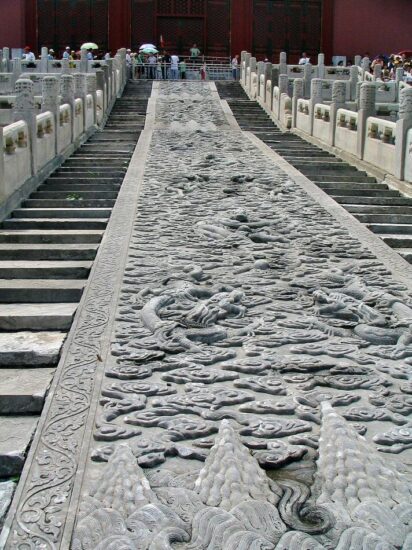
One of the most surprising and beautiful corners that we can find in the Forbidden City is grand marble staircase.
Its great beauty and majesty makes it one of the most photographed places by those of us who have the opportunity to visit the Forbidden City.
Located in the back of the Hall of Preserved Harmony, it is a marble staircase in whose central part the figures of nine dragons have been sculpted.
Built during the ming dynasty, the grand staircase is 16,5 meters long, three meters wide and one and a half meters thick.
For its construction, a large marble stone from a quarry located 70 kilometers from Beijing.
How to Live Aligned with curiosity I will tell you that its transportation required the work of 20.000 workers and thousands of mules for a month.
4 Jewelry and jade objects in the Hall of Longevity
Although most of the furniture, jewelry and decorative elements what was in it Beijing Imperial Palace were destroyed at different stages in Chinese history, in the Forbidden City Some pieces that have been preserved are exhibited.
It is in the so-called Hall of Longevity, and in another adjacent one, where you can see different decorative elements, such as the very beautiful jade decorative objects, or various gold and silver jewelry.
In reality it is a small museum that contains the most outstanding artistic objects that you can see in the Forbidden City.
5 Hall of Mental Cultivation

This small palace known as the Mental Cultivation Hall It has a special importance in the history of the Forbidden City of Beijing.
Built during the dynasty Ming, in this palace was where the emperor himself had his office, and from there he governed China Empire.
In addition, inside it also had a bedroom.
In fact, Mental Cultivation Hall It was the room where three of the emperors in Chinese history died.
And likewise, on February 12, 1912 in the Mental Cultivation Hall he went to the last emperor of China signed his abdication before the new rulers coming from the Great Chinese Revolution.
The last government meeting of the Emperor of China, although the imperial family was allowed to continue residing in the Forbidden City until she was expelled from Imperial Palace in 1924.
In the aforementioned movie The last Emperor This last stage of the Chinese empire is perfectly shown. It is a film that I recommend you do not miss if you have not seen it yet.
Don't forget your Travel Insurance
Are you organizing your trip or getaway? Don't leave without take out your travel insurance before, and here we explain why. If you hire it with us, you have a 5% discount
During your visit of the Imperial palaceTaking into account the enormous surface area that the palace complex occupies, you should not miss visiting this hall as it is one of the most attractive, so it is worth trying to locate it among all the pavilions there are.
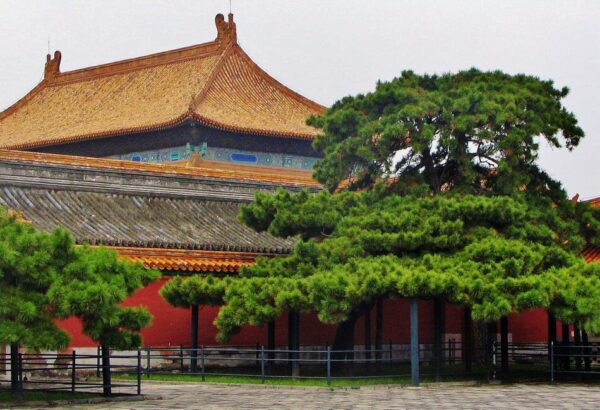
6 Yuhuayuan Imperial Garden
Located near the north gate, known as the Gate of Divine Power, Imperial Garden (Yuhuayuan) It occupies 12.000 square meters and was built in times of the ming dynastyIn 1417.
It has the characteristics of a typical Chinese garden, with trees, rocky areas, blankets of flowers and sculptural elements, such as large bronze incense burners.
At Imperial Garden of the Forbidden City There are more than twenty structures, and the main one of them is the Hall of Imperial Peace.
Also worth highlighting is a pine tree that is more than 400 years old, which symbolizes the harmony between the emperor and the empress.
7 Jingshan Park
In front of the exit of the Gate of Divine Power you will find a hill known as the jingshan park,
If you climb to the top of it you can have the best panoramic views of the Forbidden City.
El Jingshan Park It actually extends over a artificial hill only 47 meters high, which was built during the Ming dynasty.
Chinese tradition stated that imperial palaces should be built south of a hill, but when Pekin happened to be the capital of china, at the location of the new imperial palace there was no nearby hill, so it was raised artificially.
The hill is popularly known as Feng Shui.
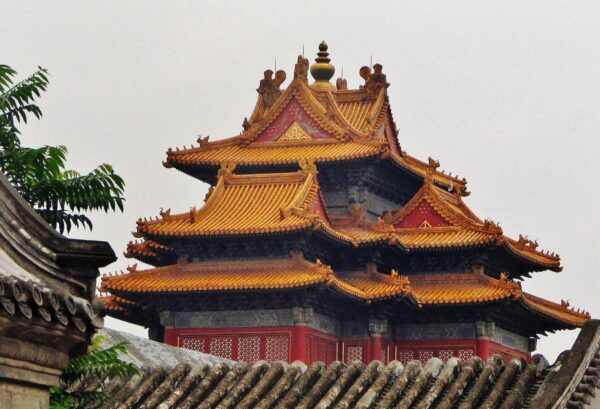
El jingshan park It has more than 200.000 square meters in area, and there are five peaks and a pavilion has been built in each of them.
To access these pavilions and walk through the park there are various paths.
From the largest of these pavilions is where you can have the unique panoramic views for the Forbidden City from a height, yes, if the frequent fog of the city of Beijing allows it.
Likewise, during your tour inside the Forbidden City you will be able to see to the north the Jingshan Park Grand Pavilion.
Book your hotel, 15% discount, free cancellation
When planning your trip, we advise you to, well in advance, Book your hotel now on booking.com where you can find discounts from 15% and you will have a possible cancellation for free


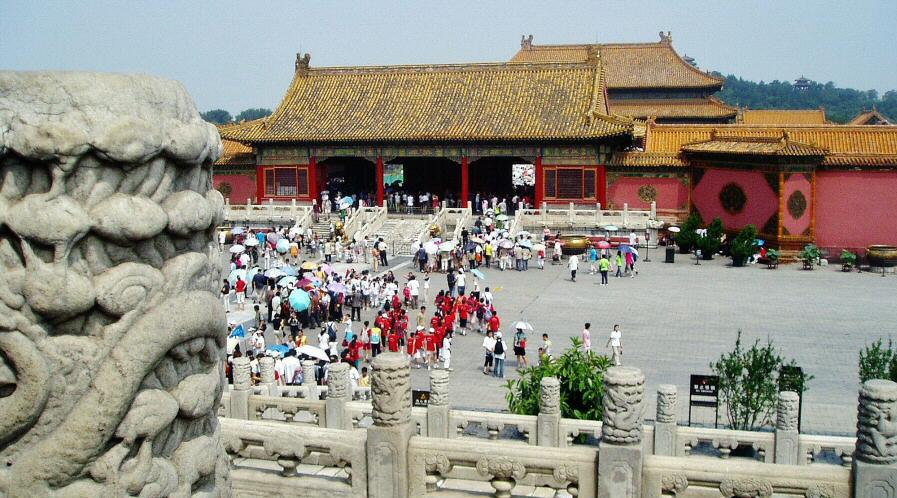
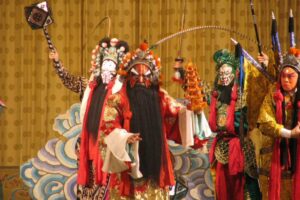
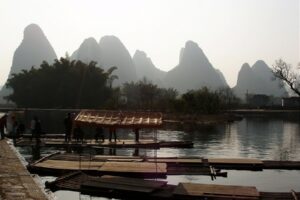
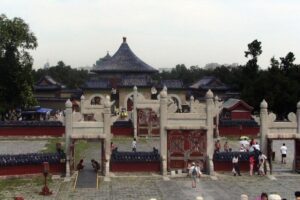











Comment